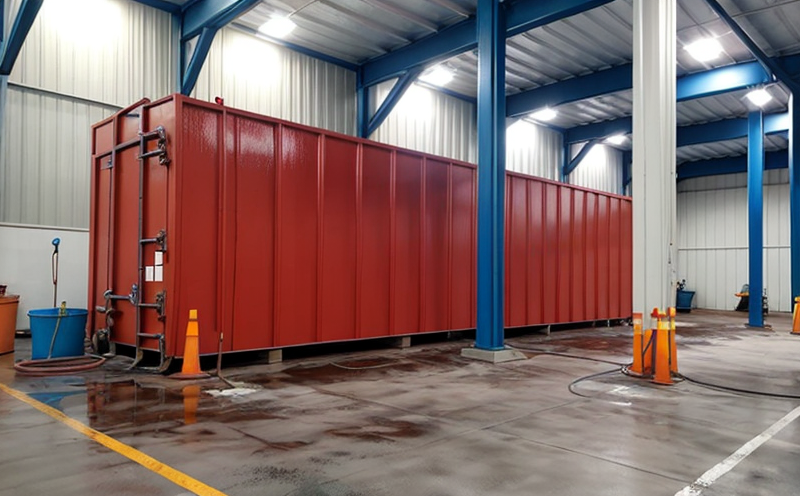EN 1609 Water Absorption Testing of Paint Films
The European Standard EN 1609 is a critical tool in the quality assurance and compliance processes for industrial coatings, paints, and corrosion protection materials. This test standard specifically addresses water absorption properties which are crucial to ensure product durability and performance under various environmental conditions.
Water absorption testing evaluates how much water can penetrate into the surface of a paint film over time. This property is essential in industries like automotive manufacturing, shipbuilding, and construction where prolonged exposure to moisture could lead to structural degradation or corrosion. By conducting this test, manufacturers gain insights into their product’s resistance to moisture ingress, helping them make informed decisions about formulation adjustments.
EN 1609 provides a standardized method for testing the water absorption of paint films according to the gravimetric method. The procedure involves placing a specimen under controlled conditions and measuring its weight gain after immersion in water. This allows for consistent results across different laboratories, ensuring reliability and comparability.
The test setup typically includes a glass container filled with distilled or deionized water at 20°C ± 1°C. Specimens are cut into standard sizes (usually 50 mm x 50 mm) and weighed accurately before being placed in the container for immersion. The duration of immersion can vary depending on the specific requirements but is commonly set between 72 hours to one week.
After the test period, specimens are removed from the water, dried thoroughly, and reweighed. The difference in weight before and after the test determines the amount of absorbed water. Results are expressed as grams per square meter (g/m²), providing a clear measure of the material’s performance.
Understanding the results helps quality managers identify potential issues early on during development stages or production processes. For example, excessive absorption might indicate poor cross-linking density or insufficient binder content in the paint formulation. Conversely, very low absorbency could suggest over-drying which may affect adhesion properties.
Customer Impact and Satisfaction
- Enhanced Product Quality: By adhering to EN 1609, manufacturers can improve the overall quality of their products. This leads to higher customer satisfaction as customers receive items that perform consistently across different environments.
- Improved Compliance: Staying compliant with international standards like EN 1609 enhances a company’s reputation in both domestic and export markets, thereby increasing customer trust and loyalty.
- Cost Efficiency: Early identification of issues through rigorous testing helps avoid costly mistakes down the line. It reduces the need for extensive warranty claims or recall campaigns which can significantly impact profitability.
Environmental and Sustainability Contributions
Incorporating EN 1609 into industrial processes promotes sustainability by encouraging the use of environmentally friendly materials that resist moisture absorption effectively. This reduces the environmental footprint associated with frequent repainting or replacement due to material degradation.
The test also supports sustainable practices by driving innovation towards creating more resilient coatings capable of standing up to challenging weather conditions without compromising on aesthetics or performance.
Competitive Advantage and Market Impact
Adopting EN 1609 can give businesses a competitive edge by setting higher quality benchmarks for their products. It demonstrates commitment to excellence, thereby attracting discerning customers who value reliability and longevity.
Moreover, meeting such stringent standards opens doors to new markets where regulatory compliance is paramount. Companies that excel in this regard position themselves as leaders within their respective sectors, fostering long-term growth and profitability.





